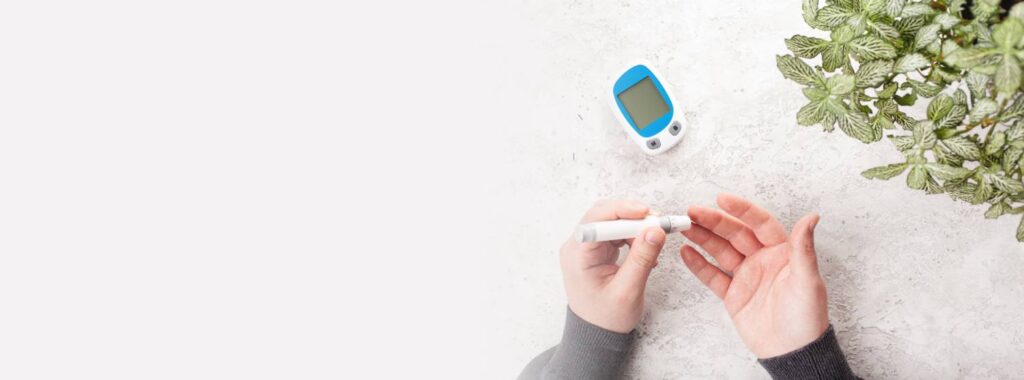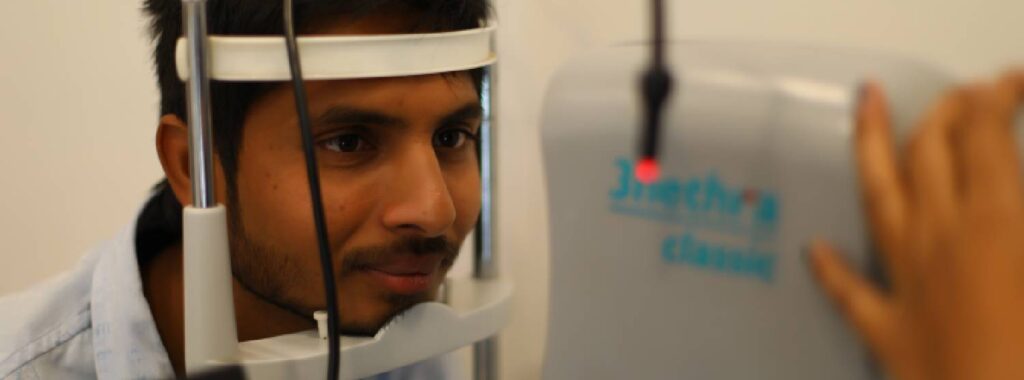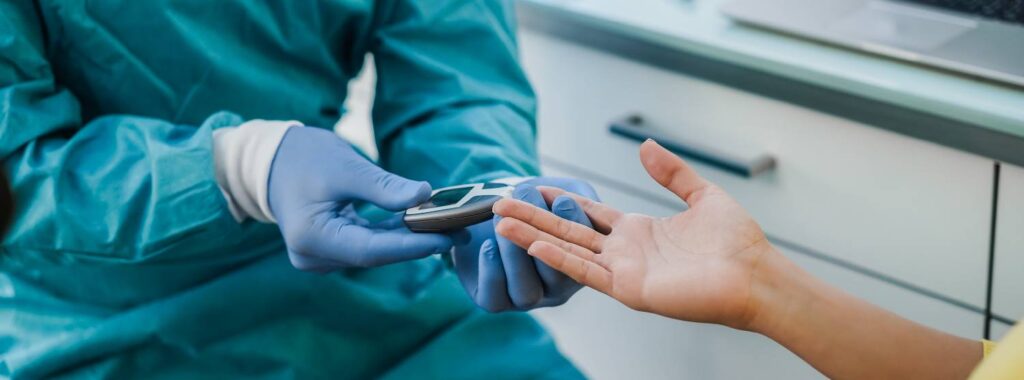It is advisable to get all the tests done at once as it gives us a snapshot of how advanced the diabetes is and what the complications are at the present moment. It also helps the doctors to prioritize the care of diabetes.
Diabetes health checks at Magna have been put together by our team of certified Endocrinologists with the focus being the patient. These diabetes health check packages cover all the essential requirements for clinical decision making to make the job of the doctor and patient easy. These diabetes health packages are often called code profiles. The advantage of doing the Dia profile in our clinic will be that the results will be available within half to 1-hour and one can meet the doctor in the same office visit with the reports. The diabetes health packages include retina examination using a fundus camera, a vibration perception threshold examination, a foot risk assessment in selected patients, 12 ECG in addition to routine blood work.

The available blood work will vary depending upon the package one has chosen. You can discuss this at our clinic regarding the same. All diabetes annual health checks will cover the essential requirements:
Our annual diabetes examinations are different from those provided online by the fact that we assess for the presence of complications of diabetes like retinopathy or retinal disease due to diabetes, the presence of loss of sensation in the foot and deformities and blood flow abnormalities in the lower limbs. These aspects are not covered in blood tests and they are office procedures which can be done only by trained paramedics in a healthcare facility.
There is a strong recommendation from all professional associations of type2 diabetes doctors to make sure that the patient gets their eyes examined at least once annually, especially for the presence of retinal disease. In our centres, we easily achieve this via a simple two minute procedure with or without administration of eyedrops to dilate the pupils. These regional images are then reported by retina experts and we will pass on the results to you via Mail. You will also get your retinal images mailed to you.

Retinal imaging can detect the formation of small out poaching of blood vessels or weakness in the blood vessel wall called Microaneurysm in the eye. If there are too many microaneurysms, laser treatment of the retina is required to prevent any sudden leakage of blood from these weak blood vessels. Studies have shown that a timely laser treatment can save vision in patients with type 2 diabetes and retinal disease.
As part of your annual physical examination for type2 diabetes, we will determine whether you have an at risk foot. We consider patients to have an at risk foot, if either the blood flow to the foot is compromised or the sensation in the foot is lost or if there is deformity in the lower limb.
Ankle brachial index refers to the careful measurement of blood pressure in all four limbs and the ratio of ankle BP to the brachial or hand BP is calculated. This ratio indicates the inductance of blood flow to the lower limbs and it is a very important screening test. Many patients who do not have any symptoms have initially a lower ankle brachial index and would go on to develop symptoms after many years. Early detection can help us manage these patients with preventive steps. Ankle brachial index is done as an office procedure by our expert technicians.


We measure the sensitivity of the patient’s nerves, especially the lower limbs by using sophisticated equipment called a vibrometer. The level of sensation that is present in the lower limbs is measured in millivolts. If higher millivolts are required for a patient to feel the sensation the limb is likely to have a lesser sensation. The value of above 25 mV would indicate an insensate foot or a foot at risk for getting ulceration. VPT is performed as part of all our annual diabetes health checks so we can track the progression of any minor damage to the nerves that are otherwise not perceived by patients. Knowing that you have poor sensation in the foot helps you take defensive action in the form of using appropriate footwear. You can also examine your foot daily for the presence of injuries or infections.
Our diabetes health checks are annual and you need not perform any of the tests, once performed repeatedly every few months. However, we do recommend the HbA1c test every time you visit a doctor.
You should meet your doctor every three months once your blood glucose values are around the control/at goal. You will be asked to meet more often if the blood glucose values are higher, in order to adjust the medication appropriately. Even between office visits our diabetes educator nurse will be in touch with you on-demand, to steer the treatment of type two diabetes.
We are a healthcare group founded by endocrinologists. Our vision is to provide personalized and evidence based health care for patients with Endocrine Disorders?.
Common disorders include Diabetes, Obesity, Thyroid dysfunction and PCOS. All these disorders require repeated examination by the doctor, quality laboratory evidence based prescribing, nurse /dietitian educators, podiatrist, preventive cardiologist, urologist and many more professionals. We endeavor to bring this integrated healthcare team under one roof at an affordable cost to our patients with endocrine problems.
All the information of the website is published in good faith and for general information purpose only. Any action you take upon the information you find on the website is strictly at your own risk. We will not be liable for any losses/ or damages in connection with the use of our website. By using our website, you hereby consent to our disclaimer and agree to its terms.
